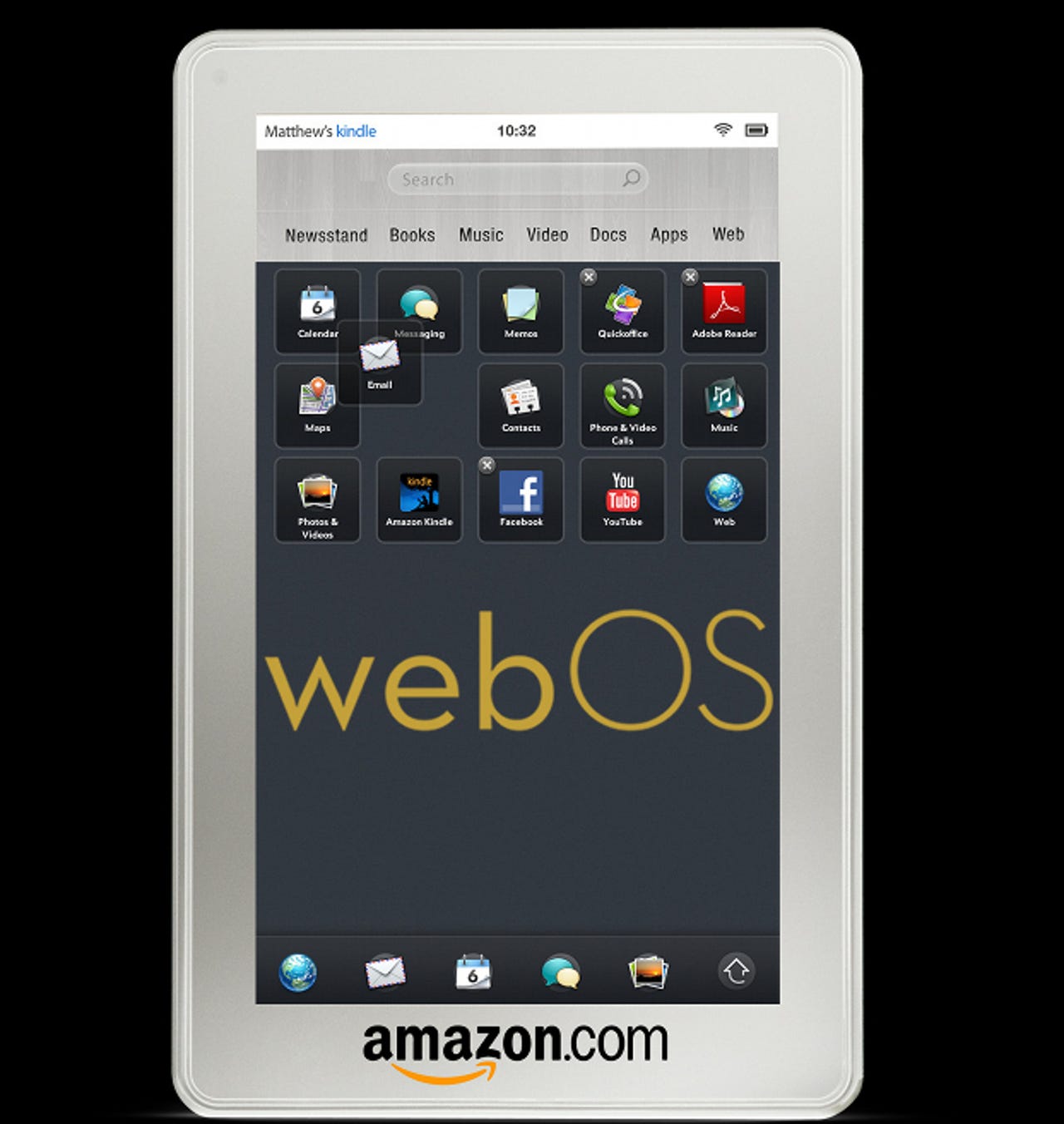Why HP's WebOS could be foundation for next Kindle Fire

The web is abuzz today with rumors that Amazon might be interested in purchasing webOS, the smartphone and tablet mobile operating system that was at the core of HP's $1.2 billion Palm acquisition in 2010 and the foundation of the failed and cancelled HP TouchPad tablet computer.
It would be very simple to dismiss these rumors as pure flights of fancy, since Amazon only just announced their first Android-based tablet product, the Kindle Fire this week.
On the surface, it seems mutually exclusive to have both WebOS and Android development in Amazon's stable.
Or would it?
As I speculated back in May -- and ended up being proven nearly 100 percent correct on this week -- Amazon has forked the open source implementation of Android 2.3 Gingerbread and has added a custom usability layer on top of it in order to differentiate between existing Android tablets from competitors like Motorola, Samsung and HTC.
Also Read
What this has resulted in is an OS that can run Android apps, but still remains a uniquely Amazon user experience. Sure, the core of this thing is the Linux kernel, and it's got a Dalvik VM and has all the libraries that allow Android 2.3 NDK apps to run flawlessly, but the similarities end there.
Both WebOS and Android are based on the Linux kernel and various other open source libraries. The older generations of WebOS also incorporated Java-based technologies, just like Android does with Dalvik. So from a basic systems architecture standpoint, the two are actually very similar.
However, whereas Android 2.3 is a fully open source stack, everything other than the basic kernel and some things in the userspace in WebOS are completely closed, which includes the multi-tasking "Luna" UI that makes WebOS unique among mobile OSes.
There's no question that WebOS's user interface is excellent, and the multitasking is superior to Android's as it exists today in both Gingerbread 2.3.5 and Honeycomb 3.2.2. WebOS's Synergy platform for social media, instant messaging and email also gives it an edge over what exists in Android today.
What WebOS doesn't have is a wealth of applications, nor does it have the rich content delivery back-end that Amazon is putting behind Kindle Fire.
I haven't had a chance to look very closely at the first Kindle Fire yet. However, one of the things that I speculated on in my original "Kindlebread" piece was that Amazon would have to fill out "gaps" that exist between the Open Source version of Gingerbread and what actually ships in partner OEM Android devices, such as the Google Apps stack which includes GMail, Search, Google Talk, Google Calendar, contacts management, et cetera.
When I asked Amazon if Kindle Fire had native Email and Calendaring, I got the 's="" an="" app="" for="" that""=""> response. In other words -- it's considered 3rd party territory on their Appstore for now.
Purchasing WebOS would solve a lot of those problems. The Synergy stack would replace Google's "App Pack" which Kindle Fire is currently lacking and Amazon's engineers could work towards making their UI tie in both the WebOS multitasking, native WebOS applications and Android Dalvik apps.
This would create an entirely new, best-of-breed tablet operating system that would give you the best of both worlds -- excellent multitasking, native email and messaging/social media integration combined with robust Amazon services and content cloud, with the Amazon Appstore for Android.
And since Amazon has entered a patent licensing deal with Microsoft, Amazon can also integrate Synergy's messaging services with the Activesync protocol (Exchange) on their Android/WebOS hybrid without any fear of litigation whatsoever.
It's really not that hard to imagine. After all, RIM is putting Android compatibility into QNX, but their OS doesn't even have the benefit of sharing the same basic systems architecture. Making Android apps run on WebOS would be a much less difficult project than it actually sounds.
Would an Amazon purchase of WebOS from HP make sense? Talk Back and Let Me Know.
